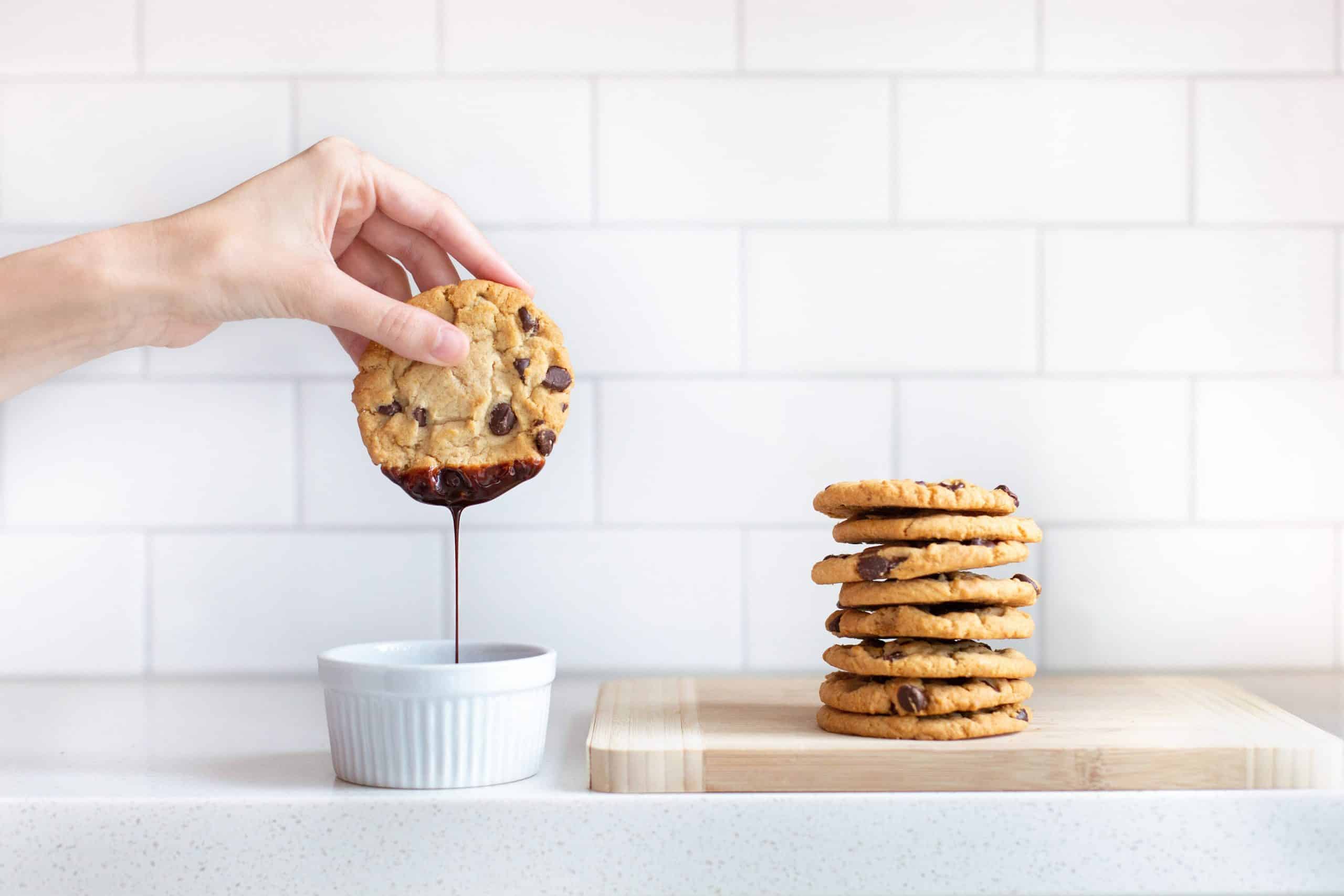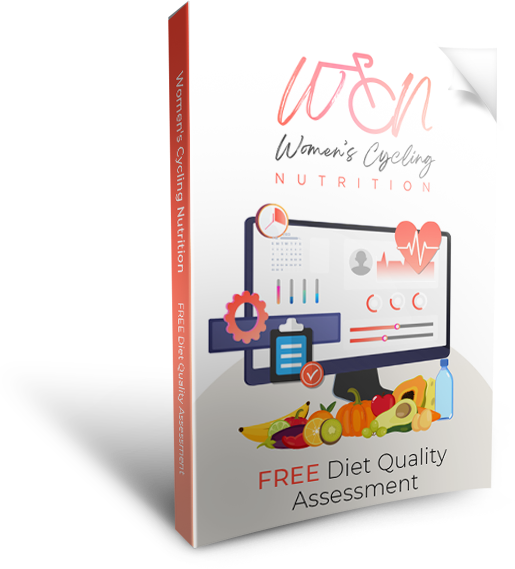
Cravings are linked to biology, psychology, and behaviors which can lead to harmful habits over time.
The biology of cravings
Research [1] has shown how our brain is involved in this urge to eat certain foods through the hypothalamus.
This brain region regulates hormones and chemicals related to hunger, stress, pleasure, and pain.
One of the essential chemicals released and controlled by the hypothalamus is dopamine, a “feel good” chemical. Dopamine is one of the main contributors to cravings [2].
Eating certain foods associated with a reward, pleasure, and pain or stress reduction releases dopamine causing an association between that food and feeling good.
The psychology of cravings
Repeatedly eating foods that exert a feeling of pleasure can become a habit that could lead to health complications.
Research [3] has shown how following these food cravings repeatedly can lead to a conditioned response which leads to the creation of a habit.
Having vivid images of how the food looks and smells can lead to having an intense craving and, more often than not, consuming that food [4].
Social Media
What role does social media play when it comes to food cravings? We are constantly being bombarded with advertisements and perfect pictures of hyper-palatable foods.
Hyper-palatable foods stimulate increased intake due to their higher amount of sugar, fat, or salt. These foods are preferable to our palate and satisfy our cravings.
More often than not, overexposure to visual imagery can lead to intense cravings.
Our Moods
Research has also investigated how our mood can affect food cravings. Negative mood states [5] such as stress, anxiety, boredom, and sadness can release cortisol, the body’s main stress hormone.
Increased cortisol levels are linked to increased food intake and indulging in specific cravings [6]. Positive mood states also show this response.
Hormones
Our bodies constantly produce and regulate hormones that control our physiological and behavioral processes.
-
- Cortisol, commonly known as the “stress hormone,” regulates eating behaviors and choices. Elevation causes you to crave sugary, salty, or fatty foods because your brain believes it needs fuel to fight that stressor [6].
- Ghrelin [6], or the “hunger hormone,” stimulates appetite and plays a big role in your cravings!
- Leptin [7] is the opposite of ghrelin. This hormone inhibits hunger and thus regulates fat storage. An imbalance between leptin and ghrelin has been shown to promote food cravings.
Sleep
We often disregard sleep and its overall effect on our health and dietary intake.
Lack of sleep is one of the most common issues in our society, particularly in adolescents and young adults.
Research [8] has shown a direct correlation between reduced sleep and significantly higher levels of food cravings, portion sizes of foods at lunchtime, feeling hungrier, and increased susceptibility to food rewards.
Studies in the past decade [9] have shown a negative relationship between sleep deprivation and food cravings. This further explains how sleep disruption is linked to an imbalance in leptin and ghrelin.
Can uncontrolled cravings affect my health?

What starts as “oh, it’s just a small piece of chocolate” can quickly become an uncontrollable craving that could affect your health.
Food cravings are a risk factor for eating disorders and obesity. Research [10] has shown a direct and significant association between food cravings, binge eating, and eating disorder behavior.
When cravings become a habit, caloric intake increases since people prefer to consume hyper-palatable foods such as chips and sweets. This excess intake could place individuals at risk for developing medical conditions such as metabolic syndrome, diabetes, and heart disease.
Five tips for managing your cravings
- Mindful eating and acceptance: these two strategies have been studied in the last two decades and have effectively reduced food cravings [3].
Mindful eating refers to being aware of the experience of eating at a specific moment; being present without other distractions such as TV, cell phones, work, studying, etc. Mindful eating is a great tool to help reduce food cravings and other components that lead to cravings, such as stress and food cues.
Decentering in mindful eating, “all experiences are impermanent in nature, rather than them being permanent or reflecting an objective reality,” reduces reactivity to food cues and cravings and increases resilience to stressful events [4]. Therefore, decentering can reduce cravings triggered by stressors such as work, study, deadlines, etc.
2. Exercise: This well-known tool has helped individuals improve their mental and physical health, from weight loss to stress reduction, and food cravings are no exception. A study on inactive men shows how 12 weeks of supervised aerobic exercise reduces total cravings [5].
Fitting in exercise can be difficult due to our fast-paced lifestyles, and people often complain they don’t have enough time or are too tired to spend 90 minutes in the gym. A study on interrupting six hours of sedentary work with six-hourly 5-min of moderate-intensity walking resulted in decreased food cravings, fatigue, and improved mood in participants [6]. This suggests that being active at work or school and taking short walking breaks could reduce food cravings and improve overall well-being.
3. Identify your trigger foods: Avoid having your go-to craved foods in the house.
It takes more planning and energy to get your craved foods if not readily available, making consumption more complicated and potentially avoiding the craving. The phrase, “the dose makes the poison,” is relevant regarding cravings. Identifying which foods can trigger your cravings will allow you to reduce the frequency and portion sizes of your craving. It is OK to consume craved foods every once in a while!
4. External stimuli and stressors: Avoid watching cooking videos, pictures, or advertisements when moody to limit or avoid environmental cues that might trigger a craving.
For excessive cravings, try recording your shows without commercial breaks with potential food temptations.
It is also essential to identify what makes you have a food craving! Is it a deadline at school? Or the end of the month report at work? Or is it an upcoming cycling competition?
Identify, identify, identify!!! Knowing what situations make your regular mood change is a tool to help reduce such stress and subsequently reduce or potentially eliminate your food cravings.
5. Hyperpalatable foods: Avoid having hyperpalatable foods in the house that tell your brain to have more!
Instead, switch to healthier foods. Rearrange your pantry and your fridge. Trade the chocolate fudge ice cream for yogurt topped with thawed frozen fruits. Satisfy that sweet craving by looking for recipes that use fruit as a source of sweeteners, such as dates or bananas.
Five healthy and easy snacks to satisfy cravings
- Smoothies are simple, nutrient-dense snacks. Blend frozen fruit with the protein powder of your choice. Unsweetened peanut butter powder and a dash of cinnamon will take your smoothie to a new level.
- Mini granola bars are convenient on a bike ride or the go; they are easy to pack and won’t weigh you down.
- Energy balls are a versatile and easy-to-carry snack. They can be made with peanut butter, almond butter, oats, flaxseed, and dark chocolate chips! There are many recipes out there, and they can be whipped up in as little as 10 minutes!
- Try a yogurt parfait! Thaw some dark sweet cherries and spoon them over plain Greek yogurt. This snack is an excellent source of calcium, protein, and antioxidants!
- Trader Joe’s dark chocolate-covered frozen fruit bites satisfy sweet cravings. Choose between banana or strawberry varieties.
Cravings can be curbed!
It may seem that overcoming intense cravings is futile; however, with some knowledge, your cravings can be curbed. Understanding what motivates your cravings is the key to gaining control over them.
Techniques such as mindful eating, finding your triggers, and external sources can be helpful. Exercise has shown some potential benefits.
Know you are not alone; we all have food cravings from time to time. Support is key to overcoming even the most challenging cravings. Join our Facebook community or sign up for our course waitlist.







